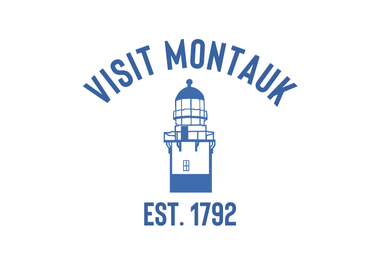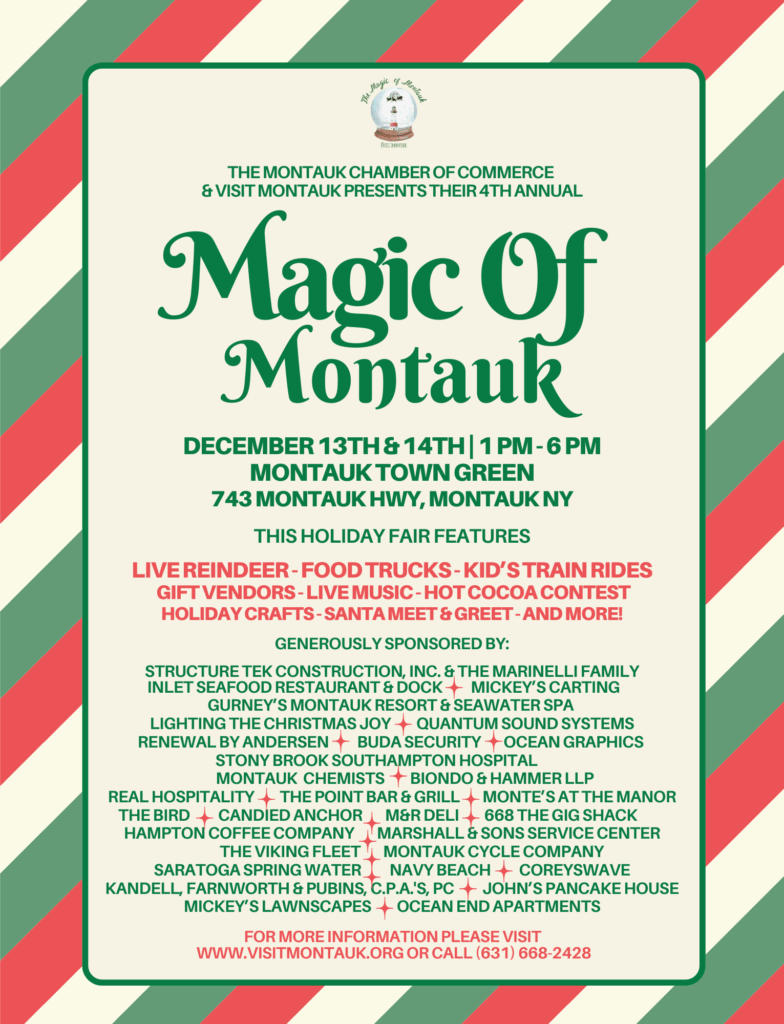Montauk is immensely rich with American history. Odds are, you may already know about our famous Montauk Point Lighthouse, commissioned by President George Washington–but what about the other historic sites Montauk has to offer? The next time you #VisitMontauk, consider diving deep into some of the fascinating history all across Montauk. These historic places of interest are among those in the USA deemed worthy of Preservation and are listed on The National Register of Historic Places.
Interested in learning more about Montauk’s rich indigenous and colonial history? Consider visiting the Montauk Historical Society and the Montauk Library for more historic archives and images.
To understand more about Montauk’s unique architecture and history, we need to introduce you to someone who single-handedly helped create it: Carl Fisher.
Carl Fisher
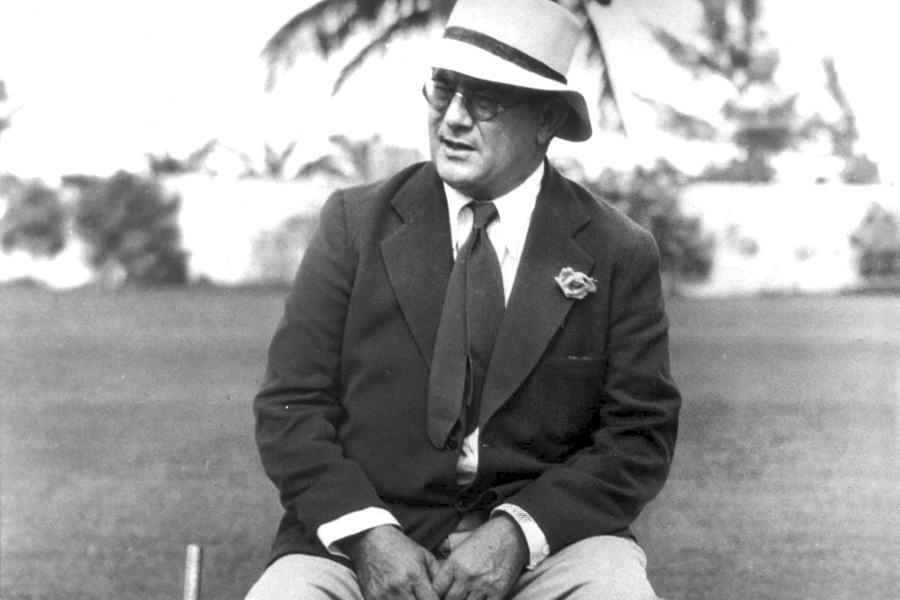
Carl Fisher, photo courtesy of Montauk Historical Society.
Carl Fisher is an Indiana native born in 1874 who developed a passion for bicycles at a young age. This passion led to his love for automobiles and eventually, his first successful business venture. Fisher, along with friend James A. Allison, purchased rights to a U.S. patent to manufacture acetylene headlights. Their company Prest-O-Lite began manufacturing them before Fisher and Allison sold to Union Carbide for $9 million (approx. $270 million today). With his fortune in tow, Fisher was just getting started on his entrepreneurial ventures.
Fisher began operating what some consider to be the first automobile dealership in the U.S. in Indianapolis. This snowballed into the next chapter of his career: designing and executing the Indianapolis Motor Speedway which he owned from 1909 to 1927. As Fisher proved his architecture and urban planning abilities, government agencies took notice. Fisher was soon contracted to help build Lincoln Highway (running East-West) and later Dixie Highway (running North-South). When Fisher reached the end of Dixie Highway in modern-day Miami, he knew he ended up somewhere special. He ended up in the perfect place to establish a new tropical getaway destination for the elite. With the help of good colleagues in the real estate development industry, Fisher began the development on the outer barrier island of Miami–what is now Miami Beach. Fisher was a key player in the Florida “land boom” of the 1920s and many of the restrictive real estate and social practices of the time still affect Miami today.
1. Montauk Point Lighthouse
Designated 2012
Don’t miss Montauk’s #1 attraction… the Montauk Point Lighthouse! Commissioned by President George Washington in 1792, the Montauk Point Lighthouse is the easternmost lighthouse in New York State. Enjoy the great outdoors in Montauk Point State Park: hike the park’s many trails, surf or fish on the stunning rocky coastline, and if you’re feeling brave–you can climb to the top of the tower during Lighthouse Museum operating hours! Explore the Lighthouse Museum alone or on a guided tour. On a clear day, expect incredible views spanning Montauk and Long Island, Connecticut, and Rhode Island. In 2012, it was designated a National Historic Landmark and is one of only 12 lighthouses to receive the honor!
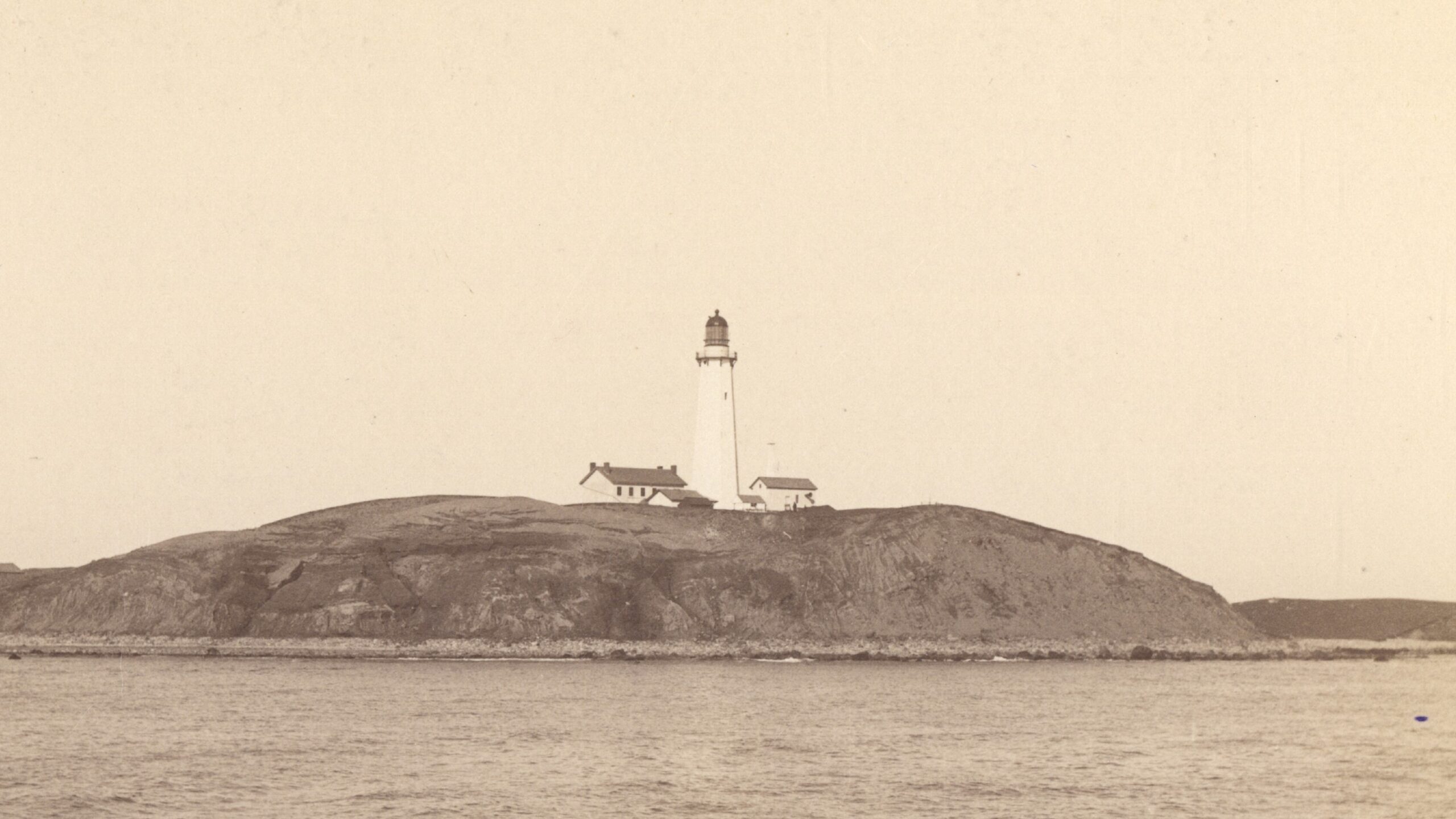 Montauk Point Lighthouse, 1880s. Photo courtesy of Montauk Historical Society.
Montauk Point Lighthouse, 1880s. Photo courtesy of Montauk Historical Society.
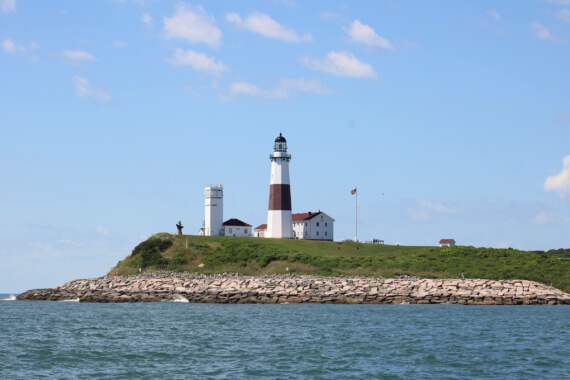
Montauk Point Lighthouse, 2024. Photo courtesy of Visit Montauk.
2. Caleb Bragg Estate at Gurney’s Star Island Resort
Designated 1987
Originally 8 buildings built on 4.2 acres on Star Island in 1929 and eventually incorporated into the Montauk Yacht Club. Caleb Bragg was an entrepreneur, speed boat racer, and race car driver in three Indianapolis 500 races where he met Carl Fisher.
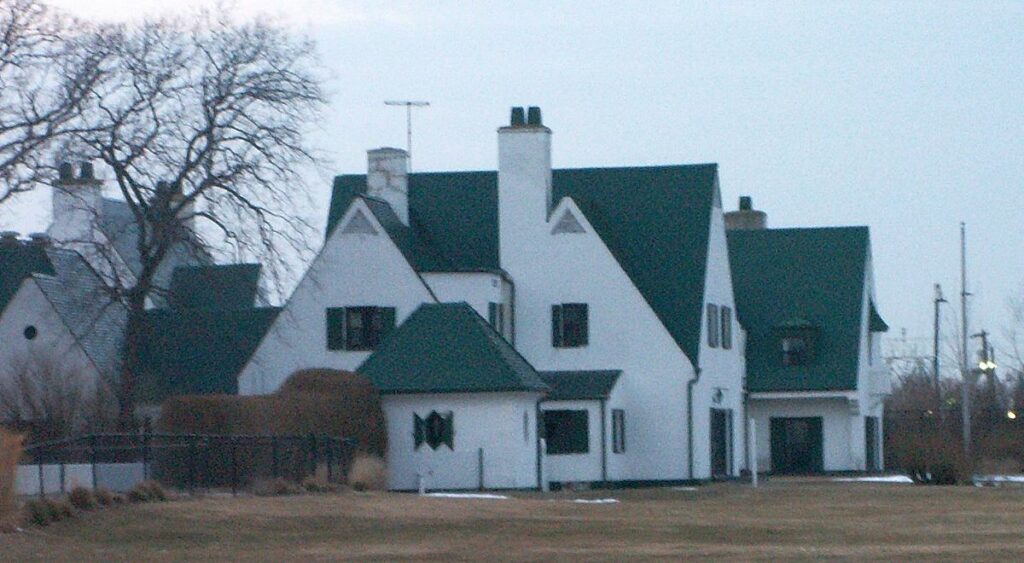
Caleb Bragg Estate, 2009. Photo courtesy of Wikipedia.
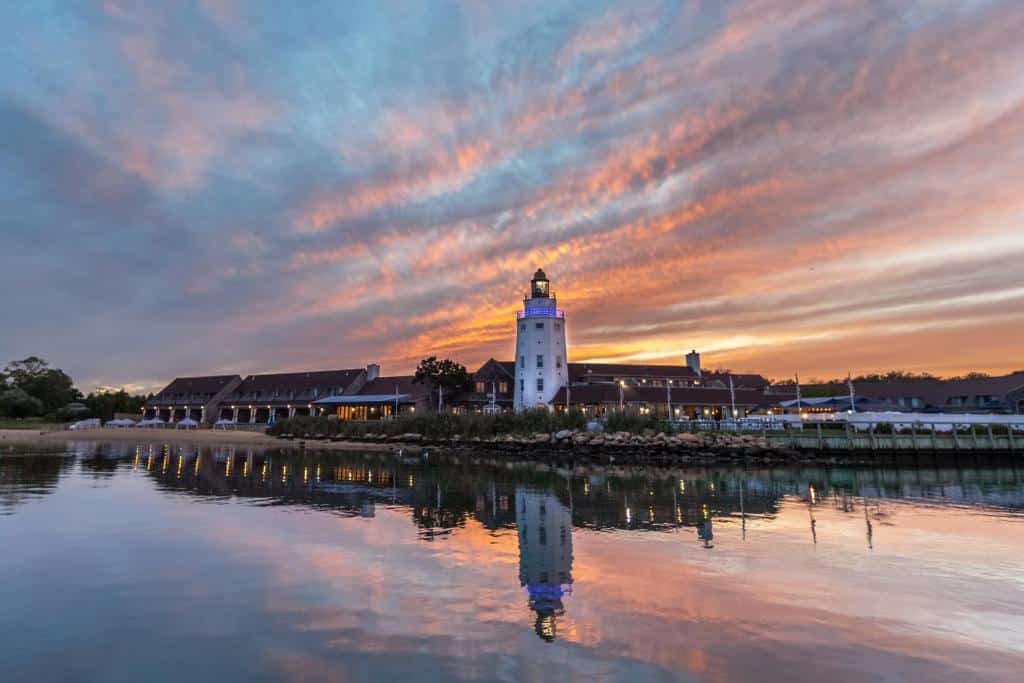
Montauk Yacht Club, 2024. Photo courtesy of the Montauk Yacht Club.
3. Deep Hollow Ranch
Established 1658
Birthplace of the American Cowboy, many visitors are surprised to learn that the USA’s oldest operating cattle ranch resides right here in Montauk. Annual cattle drives began in 1658 from west of East Hampton out to Deep Hollow Ranch, about 4 miles east of Montauk town. Today, visitors enjoy trail and beach rides through the historic property.
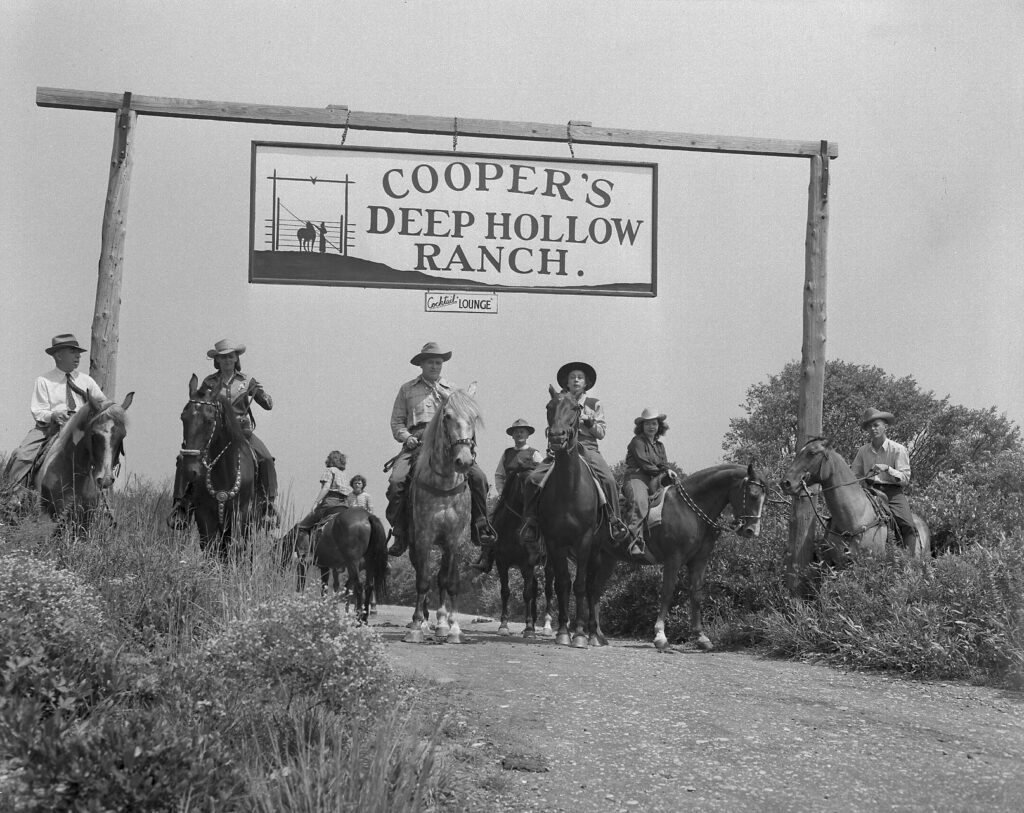
Cooper’s Deep Hollow Ranch in the 1940s. Photo courtesy of the Montauk Library.

Deep Hollow Ranch, family-owned & operated by the Keogh family today. Photo courtesy of Deep Hollow Ranch.
4. The Montauk Manor
Designated 1984
The Montauk Manor is the only one of three Grand Hotels planned by Carl Fisher in the 1920s to be built. Today, it is a 140-room condominium resort set on 12 acres overlooking Montauk.
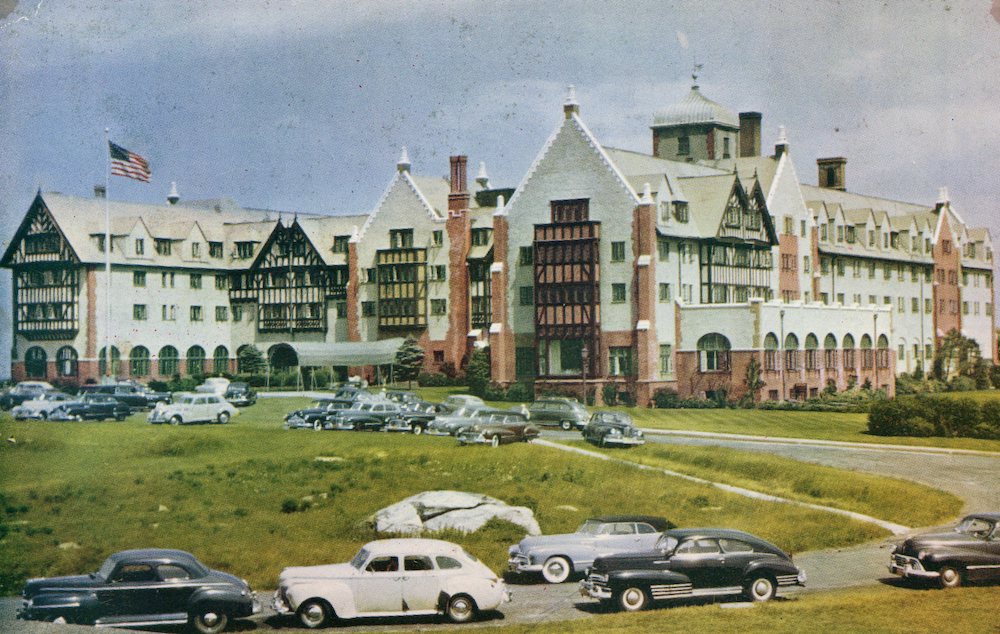
The Montauk Manor, after completion in 1927. Photo courtesy of the Montauk Manor Resort.

The Montauk Manor today, photo courtesy of Lessing’s Hospitality Group.
5. The Montauk Playhouse
Designated 1988
A Carl Fisher building, the Montauk Playhouse opened in 1929. In its lifetime, it has served as a tennis emporium, performing arts center, boxing arena, military base, and movie theatre. The completion stages of the 20-year renovation began in 2024 to add a cultural arts and aquatic center.

Original Montauk Manor Playhouse, circa 1930, Photo courtesy of the Montauk Playhouse Community Center Foundation.
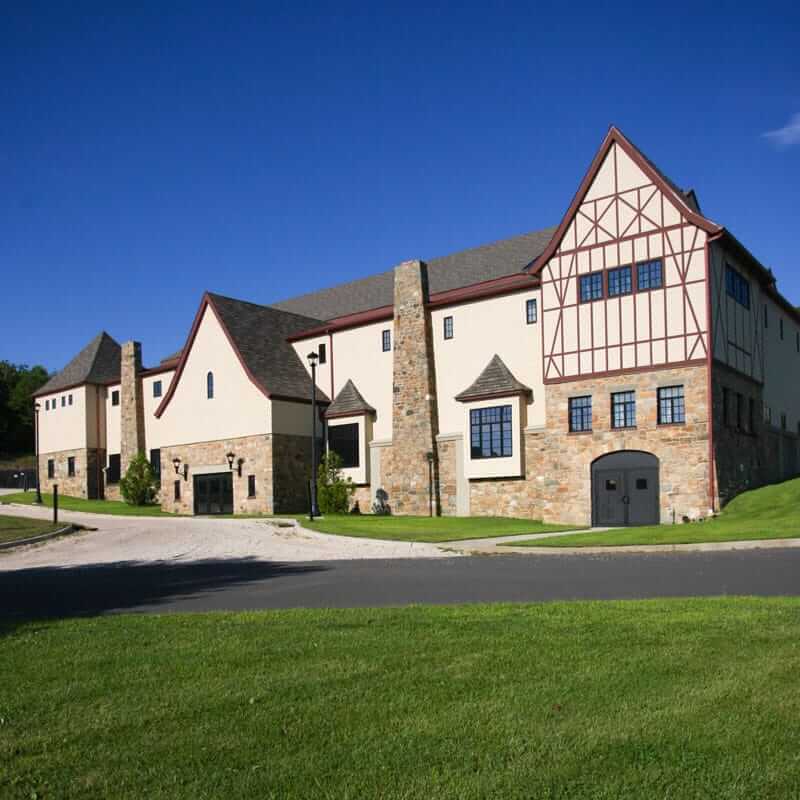
Montauk Playhouse as of 2023, prior to new construction. Photo courtesy of Montauk Playhouse.
6. HMS Culloden Shipwreck Site
Designated 1979
The HMS Culloden was a 170-foot Royal Navy frigate which ran aground and sunk 150 feet off what is now named Culloden Point in Montauk on January 24, 1871. She was burned to the waterline and abandoned. Scattered debris can be found buried in the sand and treasure hunting is prohibited. The ship’s cannon is now on display at the East Hampton Town Marine Museum in Amagansett.
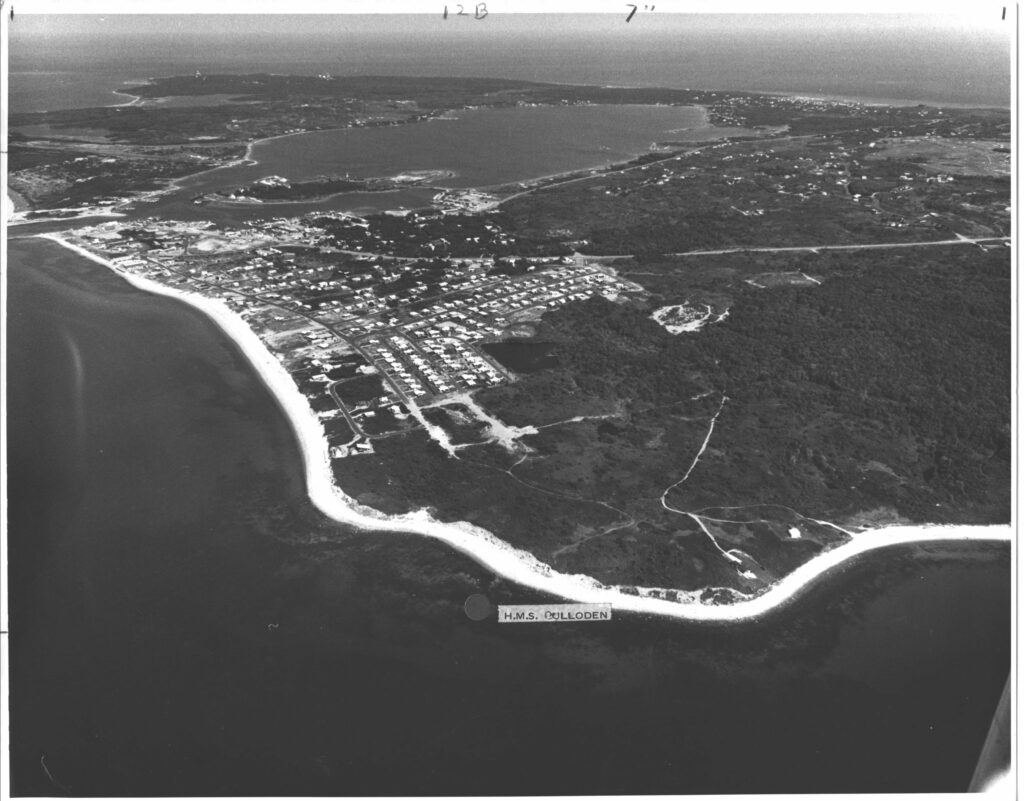
Site of H.M.S. Culloden shipwreck site in Culloden Point. Photo courtesy of the Montauk Library.
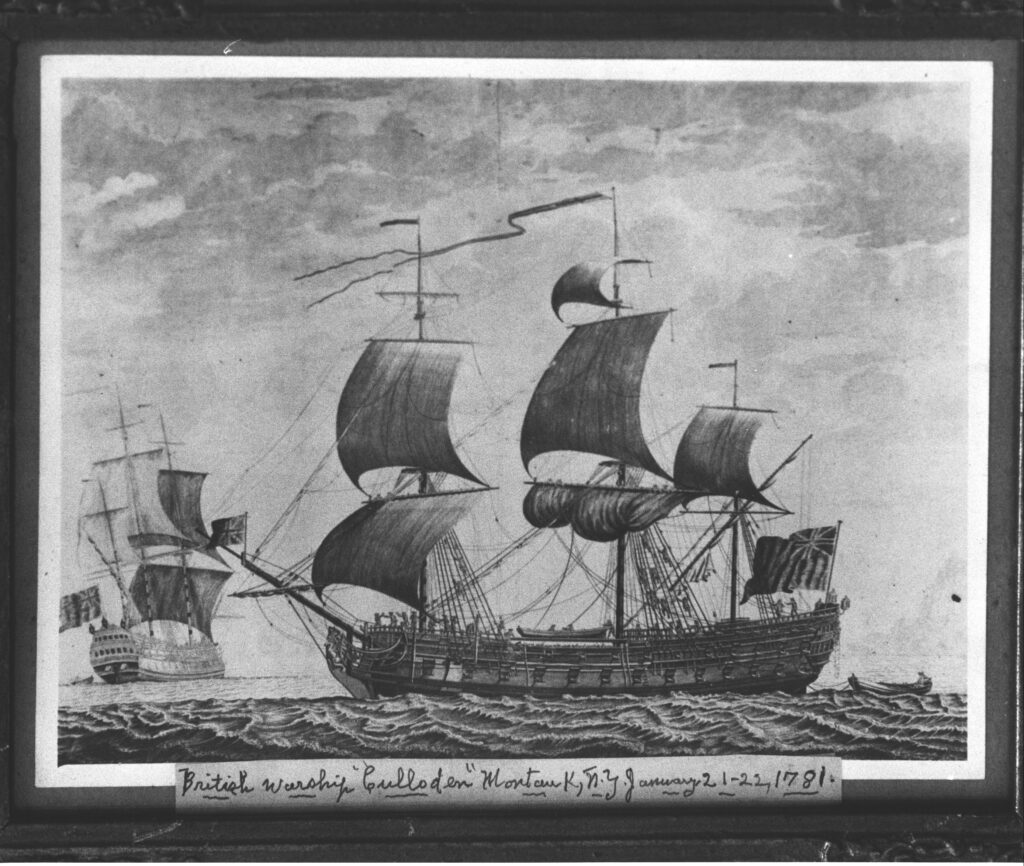
Illustration of H.M.S. Culloden. Photo courtesy of the Montauk Library.
7. AN/FPS-35 Radar Tower and Antenna, Camp Hero
Designated 2002
Camp Hero was originally named Fort Hero (Army) in 1942 after Major General Andrew Hero, Jr., who was the Army’s Chief of Coast Artillery between 1926 and 1930. The Radar tower became operational in December 1960. The reflector is 126 feet long and 38 feet tall weighing 40 tons. It was the second one ever built and it is now the last one standing.

The Radar tower at Camp Hero circa 1980. Photo courtesy of the Montauk Library.
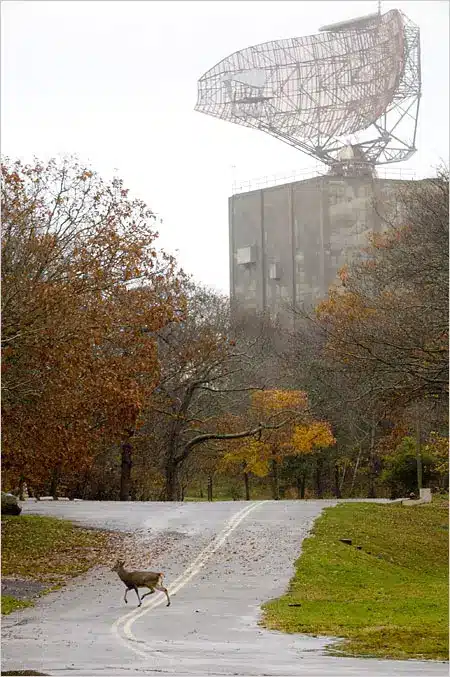
The Radar tower at Camp Hero circa 2006. Photo courtesy of New York Times.
The following historic sites are not recognized on the National Registry, but are still fascinating and important sites worth visiting during your Montauk visit!
8. Second House
As you enter Montauk, you pass by Second House on the left-hand side–an iconic pillar of local history. Directly from the Montauk Historical Society: “Originally known as the House at Fort Pond, Second House was built to replace a 1746 house that had most likely been destroyed during the Revolutionary War by the British, who also wrecked the other structures and decimated the livestock in Montauk to feed their troops.” After careful consideration and strategic renovations, the house as it appears today is the same as it appeared back in 1797. It is the site of Second House Museum, the Montauk Indian Museum, as well as the fair grounds for the Second House Craft Fair.
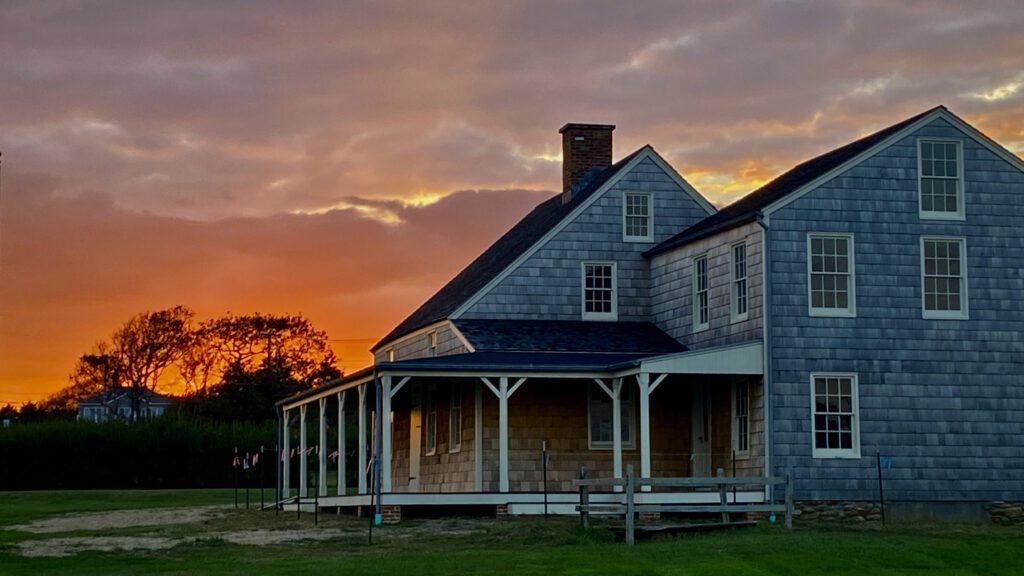
Second House, 2022. Photo courtesy of Montauk Historical Society.
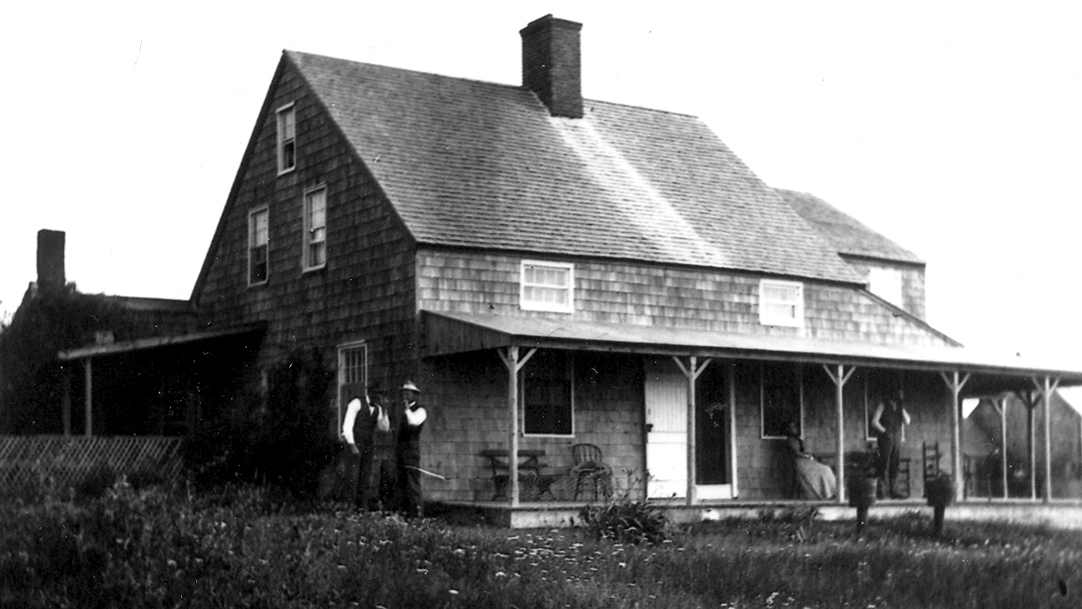
Second House, circa 1900. Photo courtesy of Montauk Historical Society.
9. Carl Fisher House and Museum
Much of Montauk’s current layout and architectural aesthetics can be chalked up to the determination of one man–Carl Fisher. His estate was privately owned until the Town of East Hampton purchased it in 2021 with the intent to preserve its history. Now designated as the Carl Fisher House and Museum, this beautiful property is home to the Montauk Historical Society who operates tons of community programming from this iconic home.

Carl Fisher’s estate, circa 1920s. Photo courtesy of Montauk Historical Society.

Carl Fisher House, 2022. Photo courtesy of Montauk Historical Society.
10. Third House
Originally the third house in Montauk, Third House represents Montauk’s nature and history in once incredible location. Adjacent to Deep Hollow Ranch, Third House is now home to Third House Nature Center, a local nonprofit organization dedicated to environmental education in Montauk. It is also a part of Montauk County Park. Historic icon Theodore Roosevelt and his Rough Riders were quarantined here at the end of the Spanish-American War.

Third House, 2022. Photo courtesy of Third House Nature Center.

Quarantined soldiers in Camp Wikoff, Montauk circa 1898. Photo courtesy of Spanish-American War Centennial Website.
11. Carl Fisher Tower
When you arrive in Montauk, it’s hard not to address the elephant in the room… the “White Elephant” on the Plaza. Today, the building is a private condominium. After abandonment after fallout from the Great Depression, and military takeover during WWII, the tall, empty building was nicknamed “the White Elephant” by locals, some of whom still call it this to this day.
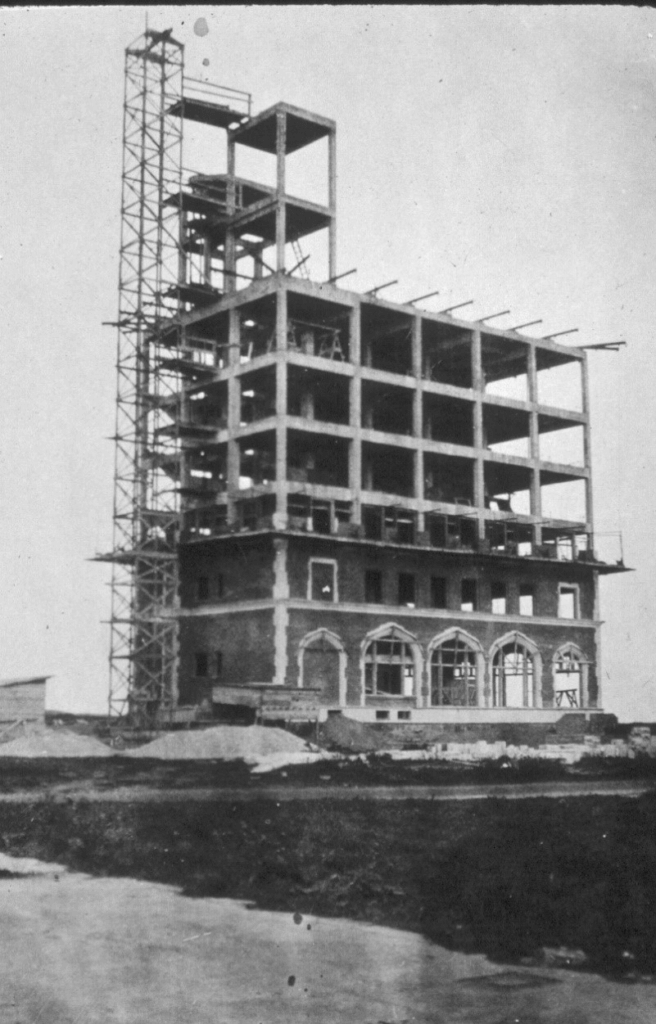
Carl Fisher Office Building under construction, circa 1926. Photo courtesy of the Montauk Library.
From the Montauk Library: “Fisher had commissioned the architectural firm of Schultz and Weaver to design the mock-Tudor office building based on plans for his office building in Miami Beach. The idea was to bring prospective buyers to the penthouse, where they had a 360-degree view and could decide which Montauk property to purchase.
“The natural landscape seen from the balcony — the Atlantic, Block Island Sound, Fort Pond and Fort Pond Bay, rolling hills and distant coasts — would have been breathtaking. But the manmade domain of Carl Fisher, the developer who wanted to make Montauk the ‘Miami Beach of the North,’ would have taken one’s breath on its own.
“By the time his seven-story office tower had been completed, in June of 1927, workers had also completed the luxurious Montauk Manor, an entire village at Shepherd’s Neck, and a golf course, among other projects, and cut an inlet and a harbor at Lake Montauk. In addition, they had essentially transformed ‘Great Plain’ into a new downtown Montauk, constructing – within spitting distance of the office tower – the mock-Tudor buildings that today house White’s Liquors, the Montauk Circle restaurant, and Herb’s Market. ‘Prices for land in that section immediately rocketed,’ wrote Jeannette Edwards Rattray of the tower’s effect.”
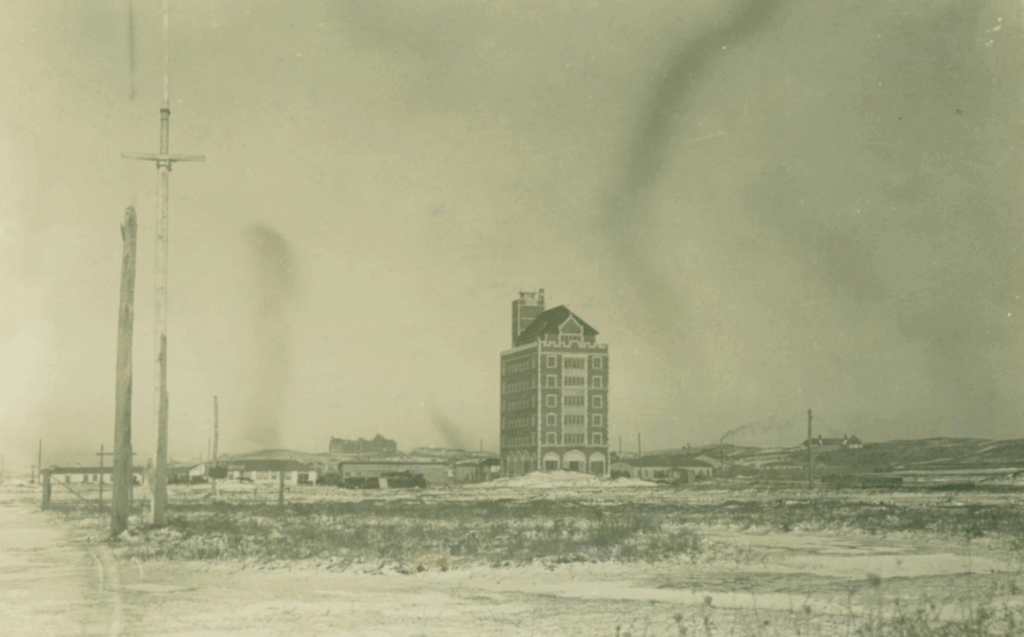
Carl Fisher Office Building, circa 1930s. Photo courtesy of the Montauk Library.
